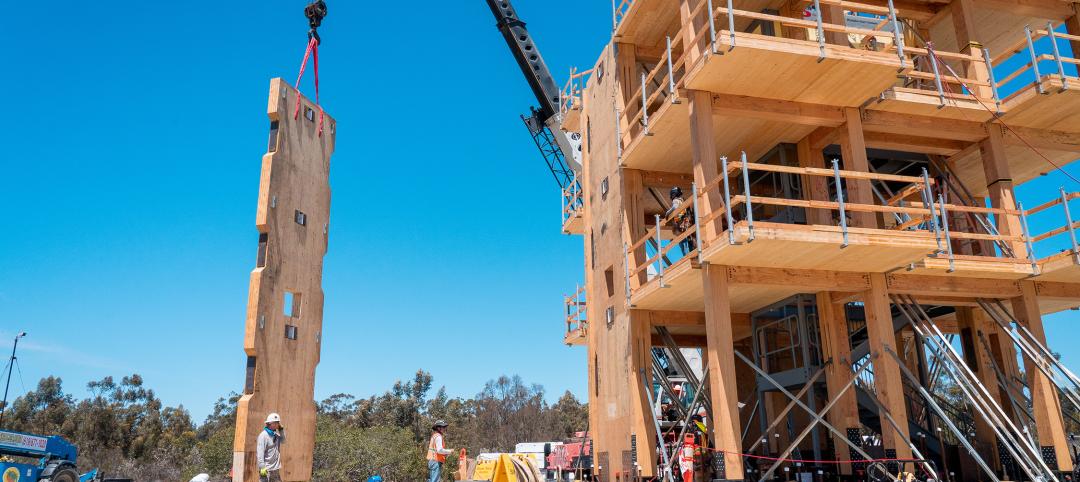A new survey by the American Institute of Architects (AIA) finds that a large majority of Americans (83%) consider public buildings—schools, libraries, community centers, and parks—part of their community’s infrastructure. And, 94% of those surveyed say that having well maintained public buildings are important to the future of their community.
In a key finding for policy makers, 83% of survey respondents agreed that investment in these public buildings is just as important as investment in roads and bridges. The survey also found that seven in 10 Americans want their public buildings renovated, and almost three-quarters of Americans consider public schools in good condition a “must have” in the communities in which they live.
These are some of the major findings of the first-ever AIA survey of American attitudes toward essential community buildings. The survey results, conducted by The Harris Poll, were made public today at the AIA Build America Summit.
Major survey findings:
- More than three in four Americans (78%) think their local government should take some financial responsibility for supporting the investment in their public buildings. Just under two-thirds (61%) think state government should take some financial responsibility. A majority (53%) think that community members should support it, and almost half (46%) believe private entities should also invest.
- A majority of Americans believe that the condition of community buildings can lead to notable benefits, particularly higher property values (60%) and improved quality of education (62%).
- 69% of Americans believe schools are one of the most important buildings to receive a consistent level of public funding.
- On average, Americans feel about one third (34%) of public funds budgeted for community features should be allocated to public buildings and/or spaces. Of the remaining, they would allocate 37% to transportation and 29% to public housing.
- Significant gender differences exist in attitudes toward public buildings and spaces. For example, women are more inclined than men (44% to 34%) to consider public housing options a “must have.” Conversely, older men (44%) place the most emphasis on funding transportation.
- Almost half those surveyed (48%) believe public housing (defined as a combination of senior and affordable housing) is one of the most important community features to receive a consistent level of public funding.
“It is clear from the survey that Americans consider investment in community buildings and spaces a priority,” said AIA CEO Robert Ivy, FAIA. “Not only do they believe that that investment would lead to improvements in property value, education, and public safety, but also serve to attract new businesses and enhance their overall quality of life.”
A copy of the survey results can be found here.
Related Stories
Mass Timber | Jun 2, 2023
First-of-its-kind shake test concludes mass timber’s seismic resilience
Last month, a 10-story mass timber structure underwent a seismic shake test on the largest shake table in the world.
Contractors | May 24, 2023
The average U.S. contractor has 8.9 months worth of construction work in the pipeline, as of April 2023
Contractor backlogs climbed slightly in April, from a seven-month low the previous month, according to Associated Builders and Contractors.
Multifamily Housing | May 23, 2023
One out of three office buildings in largest U.S. cities are suitable for residential conversion
Roughly one in three office buildings in the largest U.S. cities are well suited to be converted to multifamily residential properties, according to a study by global real estate firm Avison Young. Some 6,206 buildings across 10 U.S. cities present viable opportunities for conversion to residential use.
Industry Research | May 22, 2023
2023 High Growth Study shares tips for finding success in uncertain times
Lee Frederiksen, Managing Partner, Hinge, reveals key takeaways from the firm's recent High Growth study.
Industry Research | Apr 25, 2023
The commercial real estate sector shouldn’t panic (yet) about recent bank failures
A new Cushman & Wakefield report depicts a “well capitalized” banking industry that is responding assertively to isolated weaknesses, but is also tightening its lending.
Self-Storage Facilities | Apr 25, 2023
1 in 5 Americans rent self-storage units, study finds
StorageCafe’s survey of nearly 18,000 people reveals that 21% of Americans are currently using self-storage. The self-storage sector, though not the most glamorous, is essential for those with practical needs for extra space.
Contractors | Apr 19, 2023
Rising labor, material prices cost subcontractors $97 billion in unplanned expenses
Subcontractors continue to bear the brunt of rising input costs for materials and labor, according to a survey of nearly 900 commercial construction professionals.
Data Centers | Apr 14, 2023
JLL's data center outlook: Cloud computing, AI driving exponential growth for data center industry
According to JLL’s new Global Data Center Outlook, the mass adoption of cloud computing and artificial intelligence (AI) is driving exponential growth for the data center industry, with hyperscale and edge computing leading investor demand.
Market Data | Apr 11, 2023
Construction crane count reaches all-time high in Q1 2023
Toronto, Seattle, Los Angeles, and Denver top the list of U.S/Canadian cities with the greatest number of fixed cranes on construction sites, according to Rider Levett Bucknall's RLB Crane Index for North America for Q1 2023.
Market Data | Apr 6, 2023
JLL’s 2023 Construction Outlook foresees growth tempered by cost increases
The easing of supply chain snags for some product categories, and the dispensing with global COVID measures, have returned the North American construction sector to a sense of normal. However, that return is proving to be complicated, with the construction industry remaining exceptionally busy at a time when labor and materials cost inflation continues to put pricing pressure on projects, leading to caution in anticipation of a possible downturn. That’s the prognosis of JLL’s just-released 2023 U.S. and Canada Construction Outlook.
















